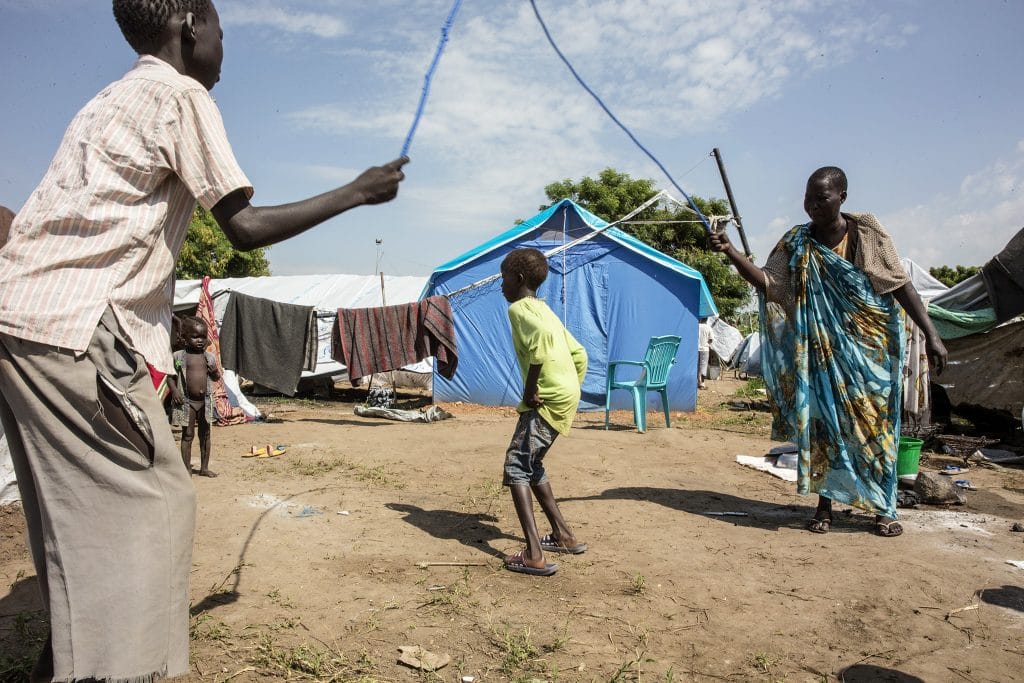This text first appeared on Security Dialogue and is re-posted here. Read the full article this blog post is based on here. The article is an outcome of a larger project supported by the Research Council of Norway: “Protection of Civilians: From Principle to Practice“. Nicki Kindersley and Øystein Rolandsen are featured in the Security Dialogue Podcast Series where they speak about their article, and the podcast can be accessed here.
Why are local communities so often targeted in South Sudan’s civil wars? How do their attackers justify violence against people defined as civilians in international law? In our article in the current issue of Security Dialogue, we answer these questions by placing recent brutalities within a longer history of conflict logics and practices in South Sudan’s modern history of violent governance. These evolving local norms inform how armed actors engage with residents in today’s conflicts.
State governance has always been violent towards South Sudan’s populations. Since slave raiders and traders shaped the first colonial incursions in the mid-1800s, ordinary people have been strategic assets to be managed and exploited. As such populations are not just legitimate targets in conflicts, but key resources to capture and control. State power was extended over Sudan’s peripheries in the 1900-1920s through mass forced displacement and depopulation of strategic areas (such as Kafia Kingi); through collective ‘punishment’ of defensive populations (for example, the aerial bombardment of Nuer communities); and violent raiding by proxy fighters from other communities, turning residents against each other. Sudan’s civil wars in the South from the 1960s continued these practices. Communities were targeted collectively based on ethnicity and imputed loyalty, displaced, and forced into camps for ‘protection’ and control, by both government and rebel forces.
ordinary people have been strategic assets to be managed and exploited
Today’s UN Protection of Civilians camps, the first UN bases in the world to be turned into protection camps for local populations, are a part of this long history of violent governance. These armed groups continue to see the population in contested areas as part of the war, where everyone is (potentially) part of the collective enemy, and where controlling desperate poor populations is also a convenient way of gaining access to external aid and cheap labour. It thus makes more sense that, since 2013, armed groups have targeted populations in forced displacements, collective ‘punishments’, violent raids and armed control of refugee camps.
The article also shows how this distinction between armed combatants and those defined as civilians in international law is further blurred by violent governance tactics since the colonial period. Successive governments have actively sought to incorporate the population into their militarised security apparatus. During colonial rule, men and women were pressed into service as enslaved or otherwise dependent servants, soldiers, and workers in fortified and militarised garrison towns. After Sudan’s independence in 1956, the government encouraged or coerced residents into acting as spies, ‘national guards’, informers and ‘local protection’ forces. This militarised security state continues, and continues to blur the South Sudanese definition of civilian.
This analysis does not excuse the massive and systematic violence against the general population of South Sudan. But without due consideration of these deeply engraved historical systems and logics of violent governance, today’s brutal conflicts become incomprehensible. Any attempt to implement protection measures for populations affected by war needs to be informed by a proper understanding of these local logics of conflict. In this logic, the UN in South Sudan is already another military-political authority managing local populations and controlling their movements. With the NGOs servicing them and the UN peacekeepers guarding them, these PoC camps are a strategic political asset to be managed and exploited.
